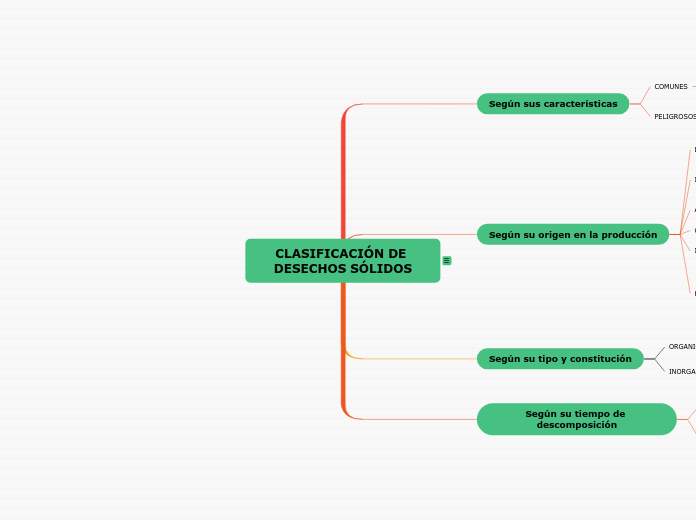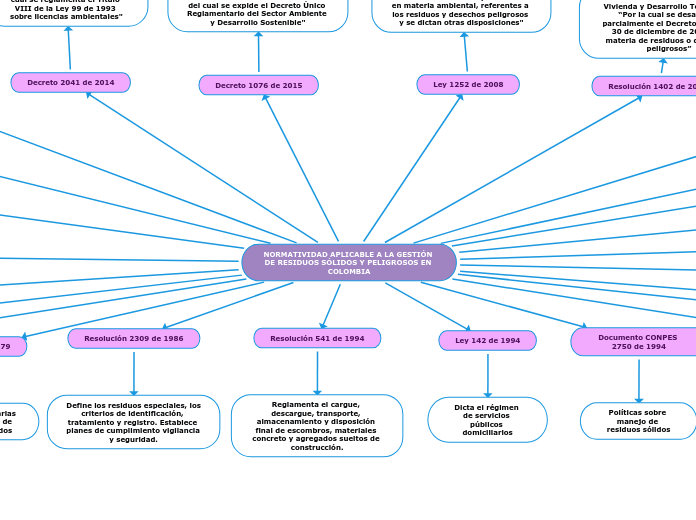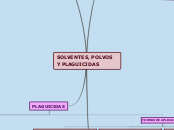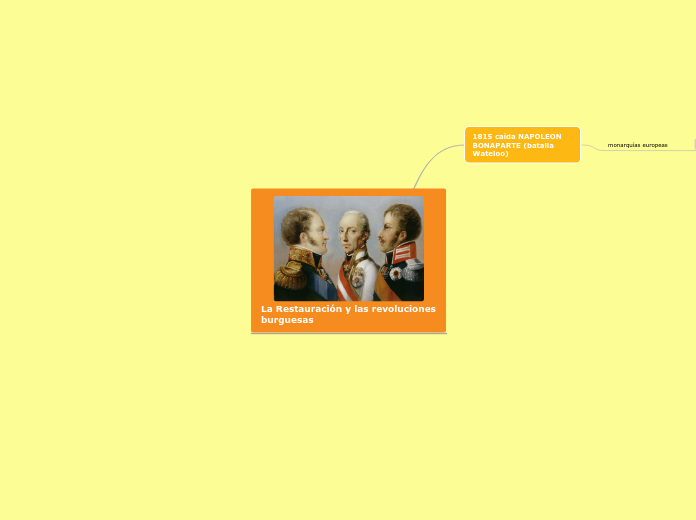CLASIFICACIÓN DE DESECHOS SÓLIDOS
CLASIFICACIÓN DESECHOS SÓLIDOS
To name your story, you have to think about the overall message and what you want your audience to understand from the story. Also, make it relevant and easy to remember.
Según su tiempo de descomposición
The ending of a story is essential. We all know that if the ending is weak, what happened before loses its importance. So make it unpredictable, but fair. A resolved ending answers all the questions and ties up any loose threads from the plot.
NO BIODEGRADABLES
This is the closure section of the story.
See examples of possible outcomes below:
- all problems have been solved
- it's clear how each one of your characters ends up
- your main character is transformed by the challenge
son difíciles de degradarse y su descomposición varía desde unos pocos años a cientos de años
Try answering these questions to come up with a closure:
- Have all the problems been solved?
- Is there a clear picture of what happens with each character in the story?
- Has the challenge transformed your main character?
- How do the characters feel in the end?
Latas y diferentes tipos de plásticos
BIODEGRADABLES
This is the moment when the main character surpasses the last obstacle and finally faces their greatest challenge.
The climax usually follows one of these patterns:
- realization
- resolution
- choice
Type in your answer.
se descomponen en un tiempo relativamente corto que puede durar desde unos días a meses como por ejemplo los restos orgánicos
Plantas, animales, etc.
Según su tipo y constitución
INORGANICO
Formados por la materia inerte, el vidrio, los plásticos como bolsas, envoltorios, etc.
ORGANICO
Provienen de la materia viva, restos de alimentos o plantas.
Según su origen en la producción
The middle of the story is where you add layers of complications that will lead to the end. Reveal more about the character's journey. Did their personality go through changes? How did they overcome the challenges? And as you build up the story’s central conflict, make it more personal to that character. Also, from the middle act, you have to lead into the final act.
HOSPITALES
Pueden ser comunes, peligrosos, y especiales
ESPECIALES
Son generados en los servicios de diagnostico y tratamiento hospitalario
Tienen procedencia medica, biomédica o clínica
Poseen las mismas caracteristicas de los grupos básicos
INSTITUCIONALES
Producidos en oficinas, centro educativos o militares.
COMERCIALES
Producidos en establecimiento como restaurantes, mercados, almacenes, hoteles, etc.
AGROINDUSTRIALES Y AAGROPECUARIOS
There wouldn't be any tension and excitement in your story if there weren't any obstacles in your character's way.
What stands in the way of your character to accomplish his goal?
A story is nothing more than a character overcoming a series of difficulties to reach the desired goal. Obstacles usually create suspense and conflict. In overcoming obstacles, there is growth: weak becomes strong; hatred turns into love; sadness into happiness; wrong into right; lies into truth; or evil becomes good.
See a few examples below:
- stopping a meteor
- finding a killer
- finding love
INDUSTRIALES
Your character(s) need(s) motivation in order to solve the challenge(s).
Metales pesados como cromo, plomo, mercurio, entre otros.
Secondary characters might also have motives that lead them to cross paths with the main character or which might trigger them to help the main character.
La industria pesada siempre genera residuos tóxicos
Why does your character need to confront this challenge? What does he/she expect to accomplish by solving it?
See a few examples:
- will marry in 3 days
- can fix the mistakes of the past
DOMICIALES O DOMESTICOS
Each story has a main character and that character usually needs to solve a problem or challenge. The character's challenge is the one that creates tension throughout the story.
Son producidos en el hogar
In most stories, there are 3 challenges. The number 3 is a mystical number symbolizing completeness. Try to come up with interesting challenges with which your character needs to struggle.
See a few examples below:
- turns into a werewolf at night
- is sent back in time
Según sus características
In the beginning of the story (or the exposition), you will need to introduce the setting and characters. You might also want to introduce the main conflict. This part of the story is important because it gives the reader necessary background information and maybe even a first insight into a character’s personality.
PELIGROSOS
The setting (time & place) of a story can change throughout the plot.
Poseen características físicas, químicas o infecciosas como corrosivas, radioactivas, entre otras.
Your story can take place wherever your imagination will take you to.
For example: in an elevator, in an enchanted forest, etc. Don't forget to give details of the environment each time the setting changes, otherwise, the story can be confusing. Also, mention the seasons as each of them has unique weather and events.
Metales pesados
Ácidos y bases fuertes
COMUNES
Characters are essential to a good story. Usually, the protagonist(s) is/are the most affected by the plot. Introduce a character by focusing on their actions, interests, and occupation, as the physical appearance doesn't make a difference in most cases.
No presenta riesgo significativo a la salud humana, animal o al medio ambiente.
Type in the name of your character.










